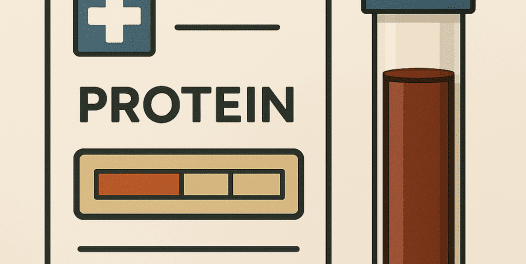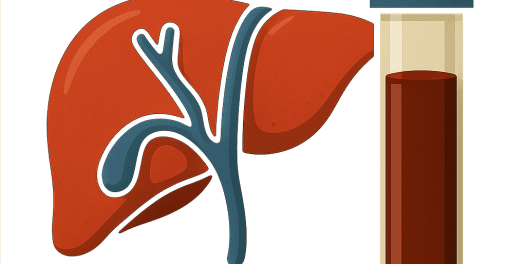HDL cholesterol test: Understanding your results
Receiving blood test results can introduce unfamiliar terms. The abbreviation “HDL cholesterol” might appear on your report, but its meaning for your health may not be immediately clear. Understanding this value is a key step in managing your well-being. This guide will help you decipher your results and gain useful insights into your cardiovascular health.
What is HDL cholesterol?
HDL stands for high-density lipoprotein. People often call it “good cholesterol.” This molecule plays a fundamental role in metabolic and cardiovascular balance. It is important to know that cholesterol itself is not inherently “bad,” as it is an essential component of our cells. The liver and intestines primarily produce this lipoprotein. It then circulates in the blood, acting as an internal cleaning service.
The role of “good” cholesterol in the body
Think of this lipoprotein as a molecular waste collector. Its main mission is to gather excess cholesterol from tissues and arteries. Subsequently, it transports this cholesterol back to the liver. Once there, the liver either eliminates or recycles the surplus. This “arterial cleaning” function makes HDL a valuable ally. It helps prevent the buildup of atheromatous plaques, which are fatty deposits that can clog blood vessels and lead to serious cardiovascular events.
In addition, this beneficial molecule has anti-inflammatory and antioxidant properties. These features also help maintain the health of your blood vessels. Consequently, doctors measure your HDL level as an important indicator of cardiovascular risk. Generally, a higher HDL level signifies better natural protection against heart disease. This distinguishes it from LDL cholesterol, often called “bad cholesterol” because it tends to deposit in the arteries.
Composition and life cycle of HDL particles
HDL is a sophisticated particle. It consists mainly of proteins, especially apolipoprotein A-I (apoA-I), which makes up about 50% of its structure. It also contains phospholipids, free cholesterol, and cholesterol esters. This unique composition allows HDL to efficiently capture excess cholesterol from peripheral tissues.
Its life cycle is dynamic. It begins as nascent particles called pre-beta HDL. These particles gradually become enriched with cholesterol as they circulate through the blood, transforming into mature particles. Therefore, HDL particles constantly evolve in size and composition, illustrating their active and ongoing role in lipid metabolism.
Why monitoring your HDL cholesterol is crucial
Understanding your HDL cholesterol level is a key step in evaluating your overall cardiovascular health. This biological parameter does not act alone. Instead, it is part of a complex network of interactions with other lipid and metabolic elements in your body.
A key indicator of cardiovascular risk
Scientific research on this lipoprotein has advanced significantly. In the 1970s, studies first established a correlation: higher HDL levels appeared to correspond with lower cardiovascular risk. Since then, further research has clarified its protective mechanisms. In-depth studies, including large meta-analyses, consistently show that higher levels of this molecule are associated with a significant reduction in the risk of cardiovascular events.
The risks of a low HDL cholesterol level
A low HDL cholesterol level means the body is less efficient at removing excess cholesterol from the arteries. This deficit promotes the gradual and silent accumulation of atheromatous plaques over many years. Eventually, this buildup can trigger severe conditions like a myocardial infarction (heart attack) or stroke. A significant portion of adults has an HDL level below recommended values, constituting a modifiable cardiovascular risk factor.
Moreover, this marker affects the interpretation of other lipid measurements. For example, calculating the total cholesterol to HDL ratio provides a more precise perspective on cardiovascular risk than considering total cholesterol alone. A high HDL can partially offset an elevated LDL level. However, the ideal goal remains to achieve both a high HDL and a low LDL.
The impact of HDL beyond heart health
Beyond its well-known cardiovascular protection, recent studies suggest HDL may have other health benefits. First, it could positively influence cognitive function and offer some protection against certain neurodegenerative diseases. Second, it appears to play a role in insulin sensitivity, which is important for preventing type 2 diabetes. Finally, this lipoprotein also contributes to immune defenses and modulates the body’s inflammatory response. These research areas are promising and continue to be explored.
How to interpret your HDL cholesterol test results
When you receive your blood work, HDL cholesterol typically appears in the “Lipid Panel” section. Here are some keys to deciphering this information.
Reading your lab report
Laboratories usually present results in columns. One column shows your individual value. Another column lists the reference values, which indicate the normal range. A third column may use visual cues like arrows or colors to highlight values outside the normal range.
Values for HDL are usually given in grams per liter (g/L) or millimoles per liter (mmol/L). To convert, 1 g/L is approximately 2.58 mmol/L. For HDL, unlike most other markers, a low value is what is generally considered problematic.
What are the reference values for HDL cholesterol?
Laboratories often differentiate HDL cholesterol reference values by sex, as levels can vary naturally.
- For men: A level above 0.40 g/L (or 1.03 mmol/L) is desirable.
- For women: A level above 0.50 g/L (or 1.29 mmol/L) is desirable.
Cardiology societies establish these thresholds based on large epidemiological studies. They represent the levels below which cardiovascular risk begins to increase significantly.
Understanding the different value ranges
You interpret your HDL level by comparing it to these reference values.
- Low HDL: A level under 0.40 g/L in men or 0.50 g/L in women reflects a reduced ability to clear excess cholesterol. This increases cardiovascular risk, even if your total cholesterol is normal.
- Normal HDL: A level between 0.40 and 0.60 g/L for men, or between 0.50 and 0.70 g/L for women, usually reflects balanced lipid metabolism.
- High HDL: A level above 0.60 g/L in men or 0.70 g/L in women is generally considered beneficial. However, extremely high levels (e.g., above 1.00 g/L) can sometimes indicate specific conditions and should be discussed with a physician.
Health conditions related to HDL cholesterol variations
Significant changes in your HDL level can be linked to certain medical conditions or lifestyle factors.
Diseases associated with low HDL cholesterol
A low HDL level can be a warning sign for several potential health issues.
Premature atherosclerosis
A deficiency in HDL leads to the gradual buildup of cholesterol in artery walls, a process called atherosclerosis. This process is often silent and can start early in life. The underlying mechanism is reduced “reverse cholesterol transport,” which encourages the formation of plaques.
Metabolic syndrome
Low HDL is a key diagnostic criterion for metabolic syndrome. This condition is a cluster of metabolic issues, including abdominal obesity, high blood pressure, elevated fasting blood sugar, and high triglycerides. Overall, it significantly increases the risk of type 2 diabetes and heart disease.
Rare genetic causes
In rare cases, a pronounced HDL deficiency results from genetic abnormalities. These include Tangier disease and familial hypoalphalipoproteinemia. Such conditions are characterized by extremely low HDL levels and often lead to early and severe atherosclerosis.
Situations linked to high HDL levels
A high HDL level is usually favorable. However, in some instances, it may signal an underlying condition.
- Hyperthyroidism: An excess of thyroid hormones can stimulate HDL production. Thus, a very high level can sometimes be an indirect sign of this condition.
- Familial hyperalphalipoproteinemia: This is a generally benign genetic condition featuring very high HDL, often associated with enhanced cardiovascular protection.
- Effect of certain medications: Some drugs can raise HDL, including estrogen, certain diabetes medications, and some antiepileptics.
How to naturally improve your HDL cholesterol level
If your test reveals a low HDL, you can often improve it by modifying your lifestyle. Adopting healthy habits can make a significant difference.
Beneficial dietary adjustments
Your diet plays a key role. Consider these tips to support a better HDL level.
- Increase monounsaturated fats: Favor extra virgin olive oil, avocados, and nuts.
- Integrate omega-3 fatty acids: Eat fatty fish like salmon or sardines two to three times a week.
- Consume alcohol with moderation: If you drink, limit intake to a maximum of one drink per day for women and two for men.
- Favor soluble fiber: Oats, legumes like lentils and chickpeas, apples, and citrus fruits are excellent sources.
- Include natural antioxidants: Berries, green tea, and dark cocoa are good choices.
Essential lifestyle changes
Beyond diet, other habits are crucial.
- Engage in regular aerobic exercise: Brisk walking, swimming, or cycling are excellent. Consistency is key.
- Maintain a healthy weight: If you are overweight, losing weight often positively affects HDL levels.
- Quit smoking: Smoking significantly lowers HDL. Quitting is one of the most beneficial actions for your cardiovascular health.
- Manage stress: Chronic stress can negatively impact health markers. Try relaxation techniques like yoga, meditation, or deep breathing.
When should you consult a doctor?
It is important to consult your doctor in the following situations:
- If your HDL remains below 0.30 g/L despite three months of lifestyle changes.
- If you have a family history of early heart disease.
- If you have other major cardiovascular risk factors like diabetes or high blood pressure.
- If your total cholesterol to HDL ratio is over 5.
Frequently asked questions about HDL cholesterol
Here are answers to some common questions about this marker.
Can HDL be too high?
It is rare for a very high HDL level to be a cause for concern. However, some studies suggest that extremely high levels (e.g., above 1.5 g/L) might be linked to dysfunctional HDL particles that are less protective. This situation is exceptional and is still being studied.
Do medications that raise HDL reduce cardiovascular risk?
This is a complex issue. Some drugs, like fibrates or niacin, do increase HDL levels. However, large clinical trials have not consistently shown a significant benefit from this increase alone. The functional quality of HDL particles may be as important as the quantity.
How does a vegetarian diet affect HDL?
Vegetarian diets are generally associated with slightly lower HDL levels. However, this is often more than compensated by a larger reduction in LDL cholesterol, leading to an overall favorable cardiovascular profile.
Which medications can affect HDL levels?
Several drug classes can influence HDL. Certain beta-blockers and thiazide diuretics can slightly lower it. Corticosteroids can raise it. Androgens and anabolic steroids tend to lower HDL significantly. If you take these medications, your doctor will monitor your lipid panel.
How can you lower non-HDL cholesterol?
Non-HDL cholesterol includes all potentially harmful cholesterol particles. To lower it, limit saturated and trans fats, increase soluble fiber, exercise regularly, and maintain a healthy weight. If needed, your doctor may prescribe medications like statins.
Is the ratio between HDL and triglycerides important?
Yes, this ratio is very important. Low HDL combined with high triglycerides is known as “atherogenic dyslipidemia.” This lipid profile is a particular concern for cardiovascular health and is common in people with type 2 diabetes or metabolic syndrome.
Conclusion: HDL cholesterol as an ally for your health
HDL cholesterol is more than just a number on a lab report. It is a dynamic indicator of your cardiovascular health. Understanding that a healthy level offers protection is the first step toward managing your well-being.
You have the ability to positively influence this marker through daily choices. Lifestyle changes involving diet, exercise, smoking cessation, and stress management can significantly improve your HDL level. Today, you can take charge of your cardiovascular health by adopting habits that promote a healthy lipid profile.
Additional Resources on HDL Cholesterol
To deepen your knowledge about this blood marker, here is a reliable resource:
Don’t wait any longer to take control of understanding your blood tests. Understand your laboratory analysis results in minutes with our aidiagme.com platform; your health deserves this special attention!
Explore Other Markers
You may also like

Total proteins blood test: Understanding and interpreting your results

Gamma-glutamyl transferase (GGT): A complete guide to this liver enzyme

Alkaline phosphatase (ALP) test: understanding your results for health insights
